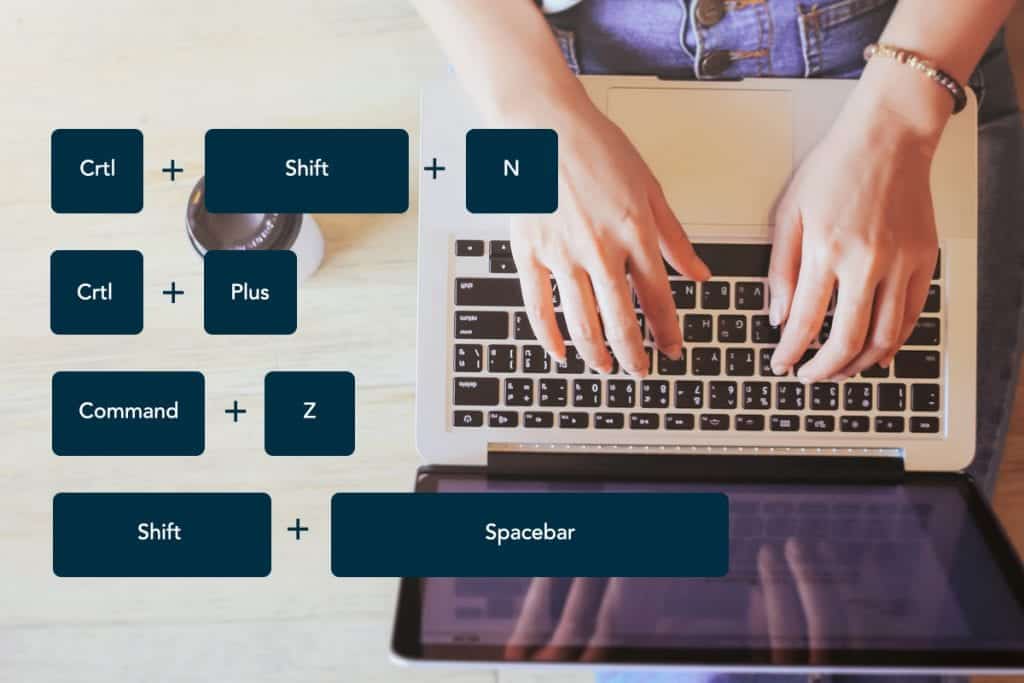Whether you use PCs or Macs, laptops or desktops, everyone is looking for a way to make everyday work quicker and easier. That’s where keyboard shortcuts come in handy—these tips and tricks can make common tasks a breeze, boosting productivity and efficiency so you can get more done.
Many of the most common keyboard shortcuts apply to programs like Microsoft Word and Excel—Cut (Ctrl+X or Cmd+X), Copy (Ctrl+C or Cmd+C), and Paste (Ctrl+V or Cmd+V) alone can cut hours from your average workflow. But common shortcuts can also help outside of those applications, particularly while web browsing or simply navigating the files and folders on your computer.
Learning these shortcuts can help you ace your daily tasks and tackle more complex work efficiently. Below are 10 of CMIT Solutions’ favorites—most of these work on both Windows and Mac, although some exceptions can occur. See something on a web page or in a file that deserves a closer look? Need to send a snippet of an image to a contact or save something for future reference. Take a screenshot—on PCs, press the Print Screen, PrtScn, or Print Scr button, usually located near the F12 key on your keyboard. Then, navigate to your Pictures/Screenshots folder to access the screenshot. On Macs, press Shift+Cmd+4 and use the feature crosshairs to drag and select the area of your screen you want to capture. The image will pop up in the bottom right corner of your screen and then save to your desktop.
If you need to see more or less detail on a webpage or in an application, hold Ctrl+plus or Ctrl+minus on Windows, Cmd+plus and Cmd+minus on Mac, to zoom in or out. In web browsers, this will only alter the level of detail on your browser’s current page — other open windows or tabs won’t be affected. This shortcut works in many common programs, as well.
This shortcut also works in several programs, including Word, Excel, PowerPoint, and web browsers: press Ctrl+F (Windows or Cmd+F (Mac) to open a search pane, then type in the desired term (use quotation marks for exact phrases) you’re looking for. Depending on the application you’re using, you’ll see the total number of instances and then be able to navigate through each of them one by one.
If you’ve ever had a power outage or software glitch wipe away valuable work, you’ll know the benefit of this one: Ctrl+S (Windows) and Cmd+S (Mac) will allow you to quickly save the document you’re working on. Once you master this shortcut, you’ll often find yourself using it after long or difficult strings of creative work—a reflexive backup task that always keeps your latest version of a document or file saved.
Similarly, if you find yourself completing an action you don’t want to stick to, you can quickly and easily undo it by pressing Ctrl+Z (Windows) and Cmd+Z (Mac). If you accidentally delete a chunk of text, move a file you didn’t want to, or change something you didn’t want to change, the undo shortcut can be a lifesaver.
If you find yourself toggling between two or more different applications to get your work done, you can easily move between them without using your mouse. Click Alt+Tab (Windows) or Cmd+Tab (Mac) to see what programs are open; then, while holding Alt or Cmd down, press Tab to move between each one. When you land on the one you want to open, let go of both keys.
This one has become more prominent as the wireless mouse has become more ubiquitous (and more prone to disconnecting at the worst possible time). On Macs, press Shift+Spacebar to open up Spotlight Search, which allows you to search for anything on your machine (including the Mouse menu under System Preferences that will allow you to reconnect your device). On Windows, you can press Ctrl+Esc to open the Start menu or press Win+D to minimize open windows and go back to your desktop.
Waiting on a slow Internet connection or your web browser to open an improperly loaded page? Press Ctrl+R (Windows) or Cmd+R (Mac) to refresh the site in its existing browser tab.
Overwhelmed by the number of open tabs in your current browser window? Open a new one with Ctrl+ N (Windows) or Cmd+N (Mac). Need to open a window that won’t record your browsing history in Chrome or Safari? Press Ctrl+Shift+N (Windows) or Cmd+Shift+N (Mac) to open a new incognito window. Firefox and Edge users can open a private-mode window with Ctrl+Shift+P (Windows) or Cmd+Shift+P (Mac).
Depending on your work environment or your job responsibilities, you may need to lock your computer multiple times a day to protect secure information or prevent unauthorized access to important data. Luckily, a quick lock is easy: press Win+L (Windows) or Cmd+Ctrl+Q (Mac) and immediately return your computer to its protected lock screen.
CMIT Solutions is here to help its clients enhance efficiency and boost day-to-day productivity. If you’re unsure about the speed of your machines or need a refresher on the shortcuts outlined above, contact us today. We protect your data, secure your network, and empower your employees to do their best work—all while worrying about IT problems so you don’t have to.

